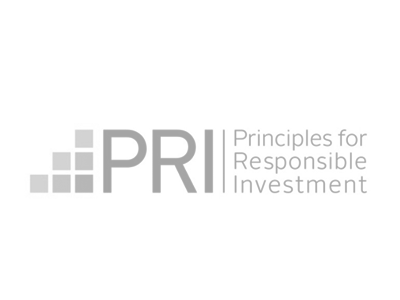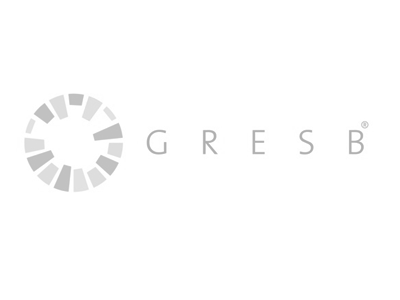IMPACT INVESTING WITH CARE
The mission of the Apollo Healthcare Property Fund is to initiate and manage long-term partnerships with institutional investors and healthcare providers to meet the growing and changing demand for affordable, sustainable care housing and facilities. By doing this, it provides high-quality healthcare real estate in the Netherlands, fulfilling the need for healthcare accommodation and facilities to improve the lives of people who need healthcare.
Investments in healthcare real estate yield secure (direct) income that are linked long-term to inflation, whilst contributing to a basic need for people. Healthcare consumers as well as healthcare providers benefit from sustainable accommodation and facilities.
SUSTAINABILITY
Responsible investment
Hartelt has been a signatory of the PRI (Principles for Responsible Investment) since 2017. PRI is supported by the United Nations and is the world’s leading proponent of responsible investment. Hartelt has also been a member of GRESB since 2016. GRESB is the Global Real Estate Sustainability Benchmark, an investor-driven organization committed to assessing the ESG performance of real assets globally.
GRESB score 2023
NET ZERO TARGET
Hartelt is committed to carbon reduction targets aligned with Net Zero.
Our net-zero carbon commitment focuses on the carbon emissions that occur during the use (‘in-use’) phase of the asset and aims to minimise energy consumption and carbon emissions related to the energy use during operations. Hartelt’s KPIs and actions considering Net zero carbon are:
ACTIONS (Portfolio)
- Set up monitoring system to measure all energy and CO2 data of assets
- Reduce energy consumption and CO2 emissions of assets
- Install renewable energy sources on-site
ACTIONS (Operations)
- Hartelt’s operational activities use energy from renewable sources, either on-site of off-site generated, by 2030
- Switch to an all-electric fleet by 2030, applicable to company-owned vehicles
- Include GHG compensation measures during transitional periods to offset emissions
HARTELTS IMPACT SO FAR
Hartelt not only has sustainable investments as its objective, as a company Hartelt also wants to reduce its emission footprint on our planet. To create an impact, we have joined Regreener, a platform for individual contributors and companies, whose mission is to fight climate change, tree by tree. Via supscriptions we can help plant trees all over the world, prevent deforestation and help make the shift from fossil fuels to green energy.
trees
planted
tonnes of CO2
compensated
ha of ongoing
rainforest protection
SUSTAINABILITY RISKS
Hartelt integrates sustainability risks into its investment policy. A sustainability risk is defined by the European legislator as an environmental (environmental), social (human or social) or corporate governance (corporate governance) event or circumstance which, if it occurs, could cause a material adverse effect on the value of the investment. An example of a sustainability risk would be flooding (an environmental event) resulting from climate change, which would flood the property and render property temporarily uninhabitable. As a result, no rental income is generated temporarily, and costs have to be incurred to restore the property. This will have a negative impact on returns.
Hartelt has integrated sustainability risk assessment into its due diligence process. The properties are comprehensively assessed using the national GPR methodology where five themes are addressed: energy, environment, health, user quality and future value.
The minimum GPR score for inclusion in the Sub-Fund is 7.5 for new construction projects and for existing properties, the Sub-Funds aim for a minimum of 7.0. By taking the above factors into account in the investment process, sustainability risks are avoided as much as possible. If a property does not meet the GPR score, a detailed renovation plan on how the desired GPR score will be achieved in the short term will be included as part of the investment proposal.
PRINCIPAL ADVERSE IMPACTS
In addition to sustainability risks, Hartelt also considers principal adverse impacts of its investment decisions on sustainability factors. Hartelt has therefore a Principal Adverse Impacts (PAI) statement.
REMUNERATION POLICY
The remuneration policy is tailored to Hartelt’s risk profile and is aimed at attracting and retaining good, qualified employees. All employees receive a fixed salary. This salary is tailored to the employee’s skills and competences. Although the remuneration policy allows for the payment of variable remunerations, this is currently not used. If variable remuneration is awarded in the future, the measures in the remuneration policy ensure that no unnecessary sustainability risks are taken. This is because the level of any variable remuneration is tied to both financial and non-financial targets. These non-financial targets are set individually and may oversee the topics listed below:
In addition, employees in control functions cannot receive variable remuneration, which depends on the results of the investment institutions managed by Hartelt. Finally, additional conditions are in place for employees directly involved in managing and administering funds. Hartelt’s policy and measures on variable remuneration do not encourage undesirable behaviour, such as taking irresponsible (sustainability) risks.
NON-FINANCIAL TARGETS
- Contribution to strategic objectives
- Contribution to/implementation of new processes
- Achievement of training objectives
- Achievement of sustainability objectives
- Compliance with internal and external regulations
- Customer satisfaction
- Collegiality within the team and with other teams/departments
- Compliance with Hartelt’s core principles








